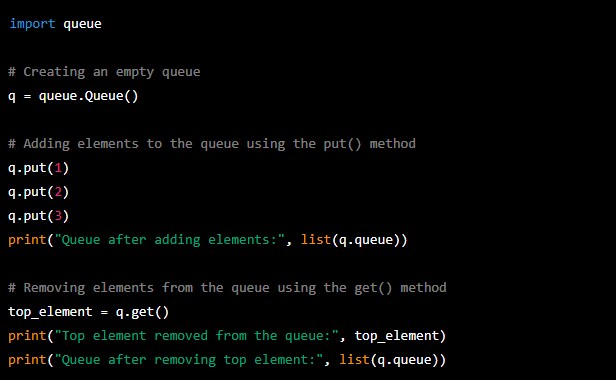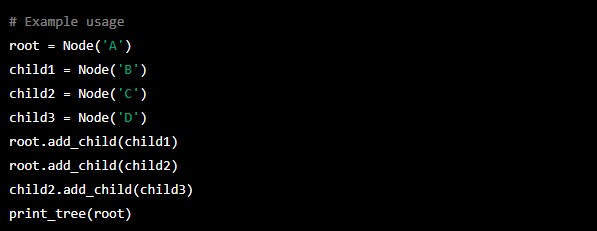From being a beginner at programming to being a coding enthusiast you would have definitely encountered the term data structure. This concept acts as oil to programming whether it’s any programming language. Data structure help store and organize data efficiently everywhere. Being an expert in different data structures like stack, queue, linked lists, trees and graphs would help crack any interview and write an optimized code that can benefit any organization. If you want to excel in this highly demanded and basic concept of algorithms and learn the implementation of various operations that can be carried out on different data structures, In that case you are on the right place.
Here, we will look into the various facets of data structures that could help you set sail for developing and improving your coding skills. So, put on your learning glasses right away.
Data science, machine learning, web development, and other industries frequently employ Python being a strong and adaptable programming language. Python has a number of built-in data structures that enable developers to store, modify, and analyze data quickly. Every Python developer who understands and uses these data structures will be able to dramatically increase the effectiveness and performance of their projects. Lists, tuples, sets, and dictionaries, some of the most popular data structures in Python, will be introduced in this blog post along with an explanation of how they may be used to address various programming issues.
Python is a dynamic, interpreted, high-level programming language. It is a well-liked option for both novice and professional programmers because to its famed simplicity, readability, and simplicity of usage. Python comes with a wide range of built-in data structures that make it simple to manage, store, and organize data effectively. . It has mathematically enhanced features like python can process strings, numbers and objects in data structures easily. We’ll look at a few of Python’s most popular data structures in this blog post.
What are data structures in Python?
Data structures are the collection of data components that provide an orderly method of storing and arranging the data in the computer so it may be used effectively. Data structures like Stack, Queue, Linked List, etc. are only a few examples. While working on complex, dynamic projects, they play a highly fascinating part in the lives of programmers by allowing them to store and manipulate data in a methodical way. Data structures are built to deal with the complexities of numbers and other objects.
Types of data structure
1) Built-in data structures:
2) User-defined data structures
Built-in data structure
The built-in data structures in Python are implemented as classes or objects with associated methods and attributes. These data structures are designed to efficiently store manipulate and process data in a specific way, depending on their purpose. Let’s have a look on its types:
Lists in Python
A list in Python is an ordered collection of objects, which can be of different types. Lists are implemented as an object with methods like append, extend, remove, sort, etc., which can be used to add, remove or modify elements in the list.
A list is a flexible grouping of items that are delimited by square brackets and commas. Here is an illustration of how to make a list:

This creates a list with five elements: integers 1, 2, and 3, and strings ‘four’ and ‘five’.

Tuples in Python
A tuple is an unchangeable group of components that are separated by commas and parenthesis. Here’s an illustration of how to make a tuple:

The identical items as the list example above are created in a tuple as a result. Tuples are immutable, thus once they are generated, and you cannot add or delete items from them. Nonetheless, indexing or slicing can still be used to retrieve their components.
Sets data structure
The term “set” refers to an unordered grouping of distinct components that is contained in curly braces or produced using the set() method. Here’s an illustration of how to make a set:

This generates a set with the same components as the examples above for lists and tuples. You cannot use indexing to retrieve the elements of sets since they are unordered and do not permit duplicates. Yet, there are several built-in methods for sets, such as add (), delete (), and union (). These are a few instances:

Dictionary
A dictionary is an unsorted group of key-value pairs that are separated by colons and contained in curly braces. Here is an illustration of how to make a dictionary:

A dictionary with three key-value pairs is produced in this way. There are several built-in methods for dictionaries, such as get (), keys (), and values (). These are a few instances:

User-defined data structures
Data structures that are generated by the programmer rather than those that are included in the language are known as user-defined data structures. These data structures were created to address certain needs that lists, tuples, dictionaries, and sets, which are built-in data structures, are unable to address.
User-defined data structures in Python come in the following forms:
So the first data structure that we’ll be discussing over here is stack:
Stack in Python
Stack are linear data structures which are based on principle of LAST-IN-FIRST-OUT. Here the data which is entered last will be first to be accessed. It is built using the array structure and has operations namely pushing, popping and accessing elements only from 1 point in a stack called as the top.

Output

Queues in Python
It is also a kind of linear data structure that works on the principle of FIRST-IN-FIRST-OUT (FIFO) i.e., the first item put to the queue will also be the first one taken away. Enqueue, which adds an element to the end of the queue, and dequeue, which removes the first element from the queue, are the two major operations that the queue supports. The queues work using the array structures and the push pop operations can be performed from both ends of the queue. These ends are also knows as the head-tail or the front-back.
Here is an illustration of how to construct and manage a queue using the queue module:

Output

Queues are used as networks puffers of traffic congestion management used in operating system for job scheduling and many more.
Trees in python
Trees are the other hand a non-linear data structures which have roots and nodes. The root or primary node is the node from where the data originates and nodes are the other data points that are available to us. The topmost node is known as the root, and each node has the potential to have one or more child nodes. When displaying hierarchical data, such as in file systems or organizational charts, trees are a helpful tool.


Output

Linked List in Python
These are linear data structures that are not stirred consequently but are mainly linked with each other using pointers. A node of linked list is composed of data and a pointer called the next. These structures are most widely used in image viewing applications, music player applications and so on.
Graph data structure in Python
Graphs are used to stir data collection of points called as the vertices and the edges. Graphs can be called as the most accurate representations of the real world map. They are used to find various costive distances between the various data points called as the nodes and hence find the least path. Many applications such as Google maps, Uber and many more make the use of graphs to find the least distance and increase profits in best way.

Output

Hash Maps
Hash Maps are the same what dictionaries are in python. They can be used to implement applications such as phonebooks, populate data according to the list and much more. It enables quick key-value pair lookup, insertion, and deletion. The built-in dict class, which implements hash tables, is used to construct hash maps.
Wrapping up
Data structure In Python is a must know stuff for any aspiring python expert. It is recommended to practice each data structure type and connect with top python tutors hence you can also check “python institute near me” and if a institute suites you, join so that the expert trainer help you to clear your doubts with codes
We have just discussed the basics of the important data structures of Python. In upcoming tutorials, we will be covering each and every data structure in depth with examples and program. For online support and learning, you can also join our online python course in Hindi
KEEP GOING, KEEP LEARNING.

